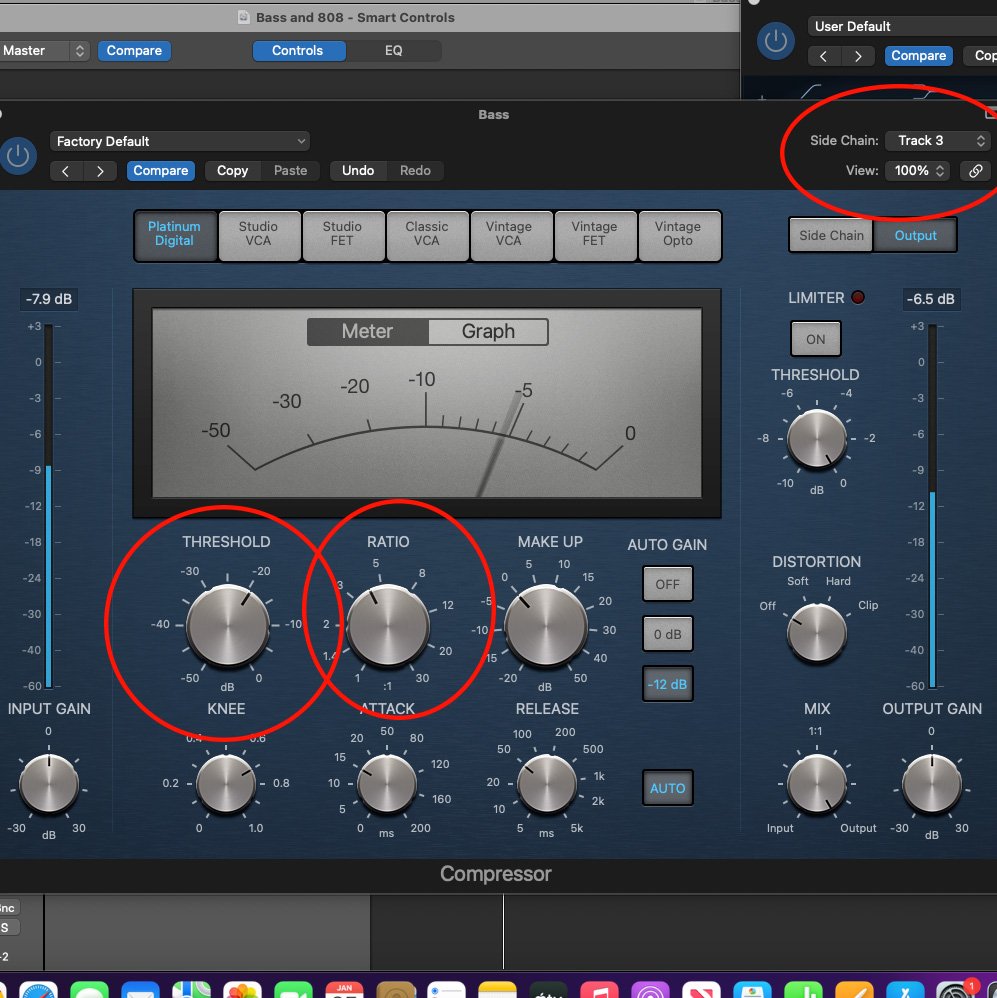A Music Producer's SIMPLE Guide to Mixing and EQing a 808 and Bass together in Logic Pro X
Mastering the art of EQing and mixing an 808 and bass in Logic Pro X is crucial if you're a music producer looking to level up your productions. When mixed and EQed properly, the 808 and bass, which are both essential components of every track, can build a dynamic and fire foundation for your music. In this article, we'll go over the essential ideas and methods you need to be aware of in order to mix and EQ an 808 and bass in Logic Pro X solely using the native EQ.
Let's start by discussing the significance of the 808 and bass in a track. The 808 provides the low-end thump that will make your listeners feel the music in their chest. It is a necessity in any modern beat
The bass, on the other hand, serves as the track's backbone and gives it drive and harmonic momentum.
These two components work in unison to build a strong and dynamic foundation for any track in many different genres. However, it's crucial to keep in mind that the bass and the 808 are both low-frequency components, which means that if handled improperly, they could easily clash and compete for space in the mix.
Let's now get into the specifics of combining these two components in Logic Pro X and EQing them. First, you should always separate The 808 and bass tracks in the DAW. This gives you greater control over each element on its own. Next, use the native EQ to carve out space for each element in the mix. Here is how:
To get rid of any low-end frequencies that might be hiding the bass on the 808, use a high-pass filter. In this case, 80Hz is a good place to start. By eliminating these frequencies, the bass can stand out and give the song's foundation a firm foundation.
Next, listen to the bass. By using a low-pass filter, you can eliminate any high-end frequencies that might interfere with the 808. This can be done well by starting at about 300Hz. This enables the 808 to dominate the low-end frequencies while also creating a distinct and defined space for the bass to sit in the mix.
It's time to give the combination some character after each element has its own space. Use the native EQ to boost particular frequencies on the 808 and bass that will highlight their distinctive features. For instance, increasing the low-end frequencies in the bass around 40–60Hz will give it more weight, while increasing the mid frequencies in the 808 around 600–800Hz will give it more punch.
Here is the secret ingredient; we must now use a compressor to bind these tracks together so that we can get some punch back. The native compressor in Logic Pro X is a great way to bind an 808 and a bass together, giving the bottom end more depth and personality. The first step is to locate the compressor in the effects browser within Logic Pro X. Once you have the compressor open it on the bass track, you will want to set the sidechain input to the track that contains your 808. This will enable the compressor to respond to the 808 Thump and modify the Bass level as necessary. Next, set the ratio to around 4:1 and adjust the threshold so that the compressor is only kicking in when the bass is playing. The attack and release times can also be adjusted to get the desired result. Last but not least, taste-test and add a little gain reduction. This is a fantastic way to unite the two components and will give your beat a tight, harmonious feel. This should give you a good place to start, but you should definitely experiment with different settings and ratios to get the desired sound.
To finish, add some depth and warmth to the mix using the native EQ. This can be accomplished by subtly boosting the low-end frequencies of the 808 and bass between 40 and 60 Hz. This can bind the two components together even further and produce a consistent sound.
It's crucial to remember that EQing and mixing are processes, and you should keep adjusting the EQ until you achieve the desired sound. In order to make sure your track sounds good in various settings, it's also crucial to listen to it through various speakers and headphones.
For up and coming music producers, mixing and EQing an 808 and bass in Logic Pro X can seem like a daunting task, but with this simple method, it's possible to build a strong and dynamic foundation in your music.
Remember to always leave room for each element, enhance the frequencies that highlight their distinctive qualities, and always lean towards giving your tracks a sense of warmth and depth. Hope this helped.
X-Cell.






